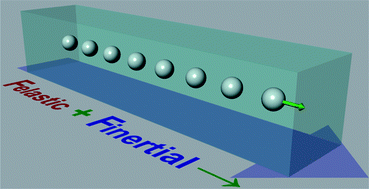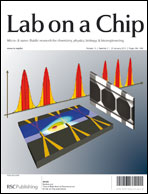Sheathless elasto-inertial particle focusing and continuous separation in a straight rectangular microchannel†
Abstract
Particle focusing in planar geometries is essentially required in order to develop cost-effective lab-on-a-chips, such as cell counting and point-of-care (POC) devices. In this study, a novel method for sheathless particle focusing, called “Elasto-Inertial Particle Focusing”, was demonstrated in a straight microchannel. The particles were notably aligned along the centerline of the straight channel under a pressure-driven flow without any additional external force or apparatus after the addition of an elasticity enhancer: PEO (poly(ethylene oxide)) (∼O(100) ppm). As theoretically predicted (elasticity number: El ≈ O(100)), multiple equilibrium positions (centerline and corners) were observed for the viscoelastic flow without inertia, whereas three-dimensional particle focusing only occurred when neither the elasticity nor the inertia was negligible. Therefore, the three-dimensional particle focusing mechanism was attributed to the synergetic combination of the elasticity and the inertia (elasticity number: El ≈ O(1–10)). Furthermore, from the size dependence of the elastic force upon particles, we demonstrated that a mixture of 5.9 and 2.4 µm particles was separated at the exit of the channel in viscoelastic flows. We expect that this method can contribute to develop the miniaturized flow cytometry and microdevices for cell and particle manipulation.


 Please wait while we load your content...
Please wait while we load your content...